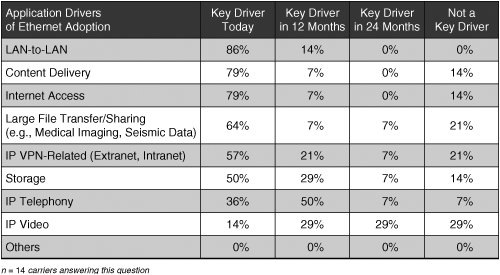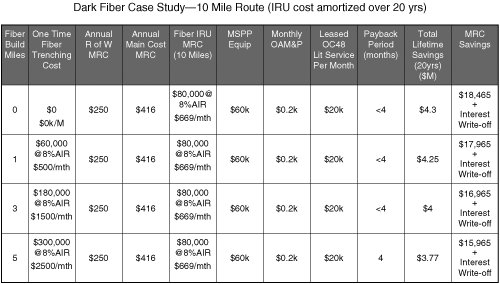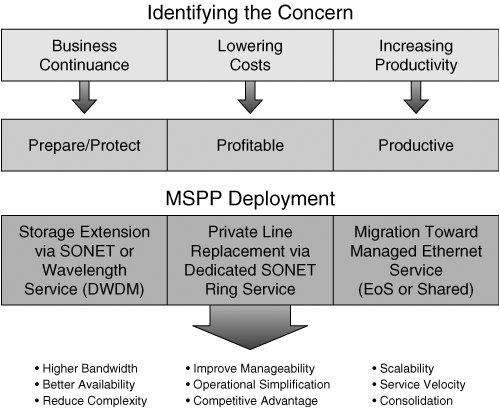MSPP Positioning in Customer Network Architectures
| With regard to the architecture of MSPPs in a customer's private network deployment, there is no great difference in architecture between a customer's private deployment and a service provider's private ring deployment for the customer, typically offered to the customer as a "managed service." The difference is not architectural; it is in who owns the equipmentthat is, in whose name the equipment is titled. The customer also has an advantage in management flexibility: Customers do not have to tie the network-management system of the MSPP to legacy service-provider systems, such as TIRKS, NMA, or Transport. What is of more interest, and what we cover in this section, is how a network manager might position an MSPP in the network to justify it in an ROI business case. Several issues are at the top of corporate executives' minds today:
First and foremost for many organizations is business continuance, which is a real concern. Executives are asking themselves, "Is my company prepared to survive a disaster?" In a variety of organizations, many who think they are prepared aren't. This "unpreparedness" has prompted the government to step in and develop standards mandating safeguards to protect consumer information, such as banking records, trading records, and other critical financial data. Second, profitability is back. The days of a "sexy" 15-page business plan with no substantial demonstration of the capability to turn a profit just won't get you $10 million in start-up financing anymore. Everyone is focused on profitability. Thus, established organizations are looking to do this on a number of fronts, including, but not limited to, lowering costs while simultaneously raising productivity. Companies are still spending money, but for the most part, they are doing it to save money or increase employee productivity. Third, organizations are looking at new approaches to doing business. Whether they are looking to lower costs or increase employee productivity, many are using technology to achieve their goals. Technologies and applications such as IP telephony, wireless communications, video on demand, network collaboration applications such as "webinars," and more are driving these changes. So business continuance, profitability, and new ways of doing business are making companies rely even more on their networks and networking infrastructures. An unreliable, unstable, or inefficient network foundation is just not adequate when applications are producing gigabytes of data. This data has to be readily available to employees, customers, and business partners if something "disrupts" the fabric of that infrastructure. For example, if a major power outage take place in Seattle, retail outlets throughout the United States and the world can't just stop selling hot beverages and scones. They must seamlessly switch operations from their main Seattle systems to redundant systems located outside the Seattle area. This is where MSPPs play a key role, as shown in Figure 4-38. Figure 4-38. Issues in Executives' Minds, with MSPP as a Core Component of Their Solutions Figure 4-39 shows the key application drivers of organizations and their effect on creating demand for varied and higher-bandwidth services, such as Ethernet, shown in Figure 4-40. This again sets the stage for an MSPP architecture private deployment. Figure 4-39. Application Drivers That Are Creating Demand for Higher-Bandwidth Service of Ethernet in the MAN Figure 4-40. Various Services Within an MSPP-Based Architecture A customer who has the capability to acquire dark fiber between desired locations can develop a business case for using MSPPs as a means to carry traffic from site to site. The business cases are typically strong, with payback periods on the capital expense required to purchase the MSPPs from 6 months to 18 months, as shown in Figure 4-41. These costs need to be considered beyond the dark fiber lease:
Figure 4-41. Corporate Business Case Analysis for Private MSPP Deployment of MSPP Example The business case is strong for private deployments of MSPP architecture to satisfy corporate business objectives. The MSPP architecture solution provides the following:
|
EAN: 2147483647
Pages: 140
